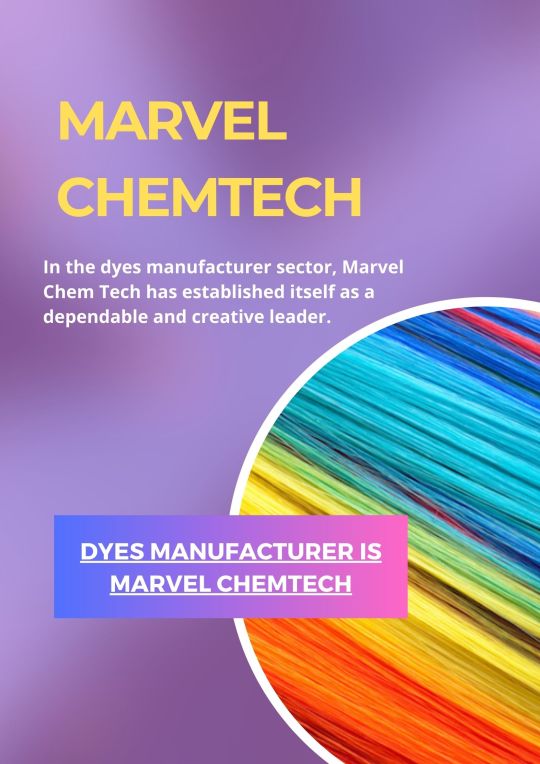#dyes manufacturers in india
Text
The Significance of Dye Fixing Agents in Textile Industry

Enhanced Color Fastness: By chemically attaching colors to the fabric fibers, dye fixing agents increase the color fastness of textiles that have been dyed. This keeps the colors bright and true for the duration of the garment by stopping the dyes from leaking or fading when washed, rubbed, or exposed to light.
Long-lasting Color Retention: Dye fixing chemicals help textiles retain their original color intensity and brilliance even after repeated launderings or exposure to environmental variables by successfully fixing dyes onto fabric fibers. This guarantees that clothing will maintain its visual impact and aesthetic appeal over time.
Diminished Environmental Impact: By decreasing dye waste and run-off, dye fixing agents help to lessen the environmental impact of textile dyeing operations. Water and energy resources are conserved during the dyeing process when these chemicals improve the attachment of dyes onto fibers, hence reducing the need for unnecessary rinsing and washing.
Better Wash Fastness: Dye fixing chemicals help dyed textiles wash more quickly, keeping the colors vibrant and preventing them from smearing onto other fabrics. This keeps the appearance of the garment intact and stops color migration or staining—especially in textiles with several colors or prints.
Textiles treated with dye fixing agents: Have better stain resistance against typical things including food, drinks, and household chemicals. This increases the general durability and endurance of the fabric and makes clothing easier to clean and maintain, thereby decreasing the possibility of unattractive stains.
Compatibility with a Variety of Fibers: Cotton, wool, polyester, nylon, and other natural and synthetic fibers are among the many fabrics that dye fixing agents work well with. Due to its adaptability, textile producers are able to guarantee uniform coloration and performance by achieving consistent and dependable dye fixing outcomes on a variety of fabric types.
Regulatory Compliance: Dye fixing agents assist textile producers in adhering to strict safety regulations and standards pertaining to textile performance and color fastness. These agents help to produce high-quality and compliant textile goods by making sure dyed textiles meet industry standards for color fastness, durability, and consumer safety.
Consumer happiness: In the end, dye fixing agents are essential for raising consumer happiness since they guarantee that colored textiles keep their color vibrancy, look, and functionality throughout time. Clothes that hold their color and don't fade or bleed are more likely to live up to client expectations and provide long-term value.
Visit site
#Dyeing Printing Auxiliaries Manufacturer#Dyeing Printing Auxiliaries Manufacturer in India#Textile Finishing Chemicals Manufacturers#Textile Finishing Chemicals Manufacturers in India#Textile Finishing Chemicals Suppliers#Dyes Manufacturers#Textile Dyes Manufacturers#dyes manufacturers in india#textile finishing chemicals#textile dyes manufacturers#dyeing auxiliaries#Finishing Chemical Manufacturers#Printing Dyes Suppliers#Textile Auxiliaries#Textile Auxiliary Manufacturer#Pretreatment Textile Manufacturer#Textile Pretreatment Chemicals#Printing Dyes Manufacturers#Silicone softeners Manufacturer#Silicone softener for textiles#Desize Enzymes Manufacturer#Optical Brightener#Optical Brightener Manufacturer#Turkey red oil manufacturer#Printing Dyes#Printing Dyes Manufacturer#optical brightening agent in textile#textile auxiliaries manufacturers in india#dye manufacturers in india#dyeing and printing
0 notes
Photo

Dyes were playing an essential role in clothing these days in 2020; there was a trend going on, which was tie-dye T-shirts and clothes. Due to that trend, it increased the market value of dyes.
0 notes
Text
“Discover: Types of Loom in Textile Manufacturing”
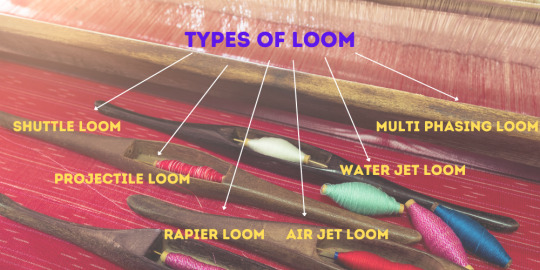
Loom? What are They? What Do They Manufacture?
Looms is the weaving machine which converts the yarn into a fabric. There is no history of when looms were discovered but one thing is clear that it was before the birth of Jesus christ. There are 2 types of looms: Shuttle Looms and Shuttleless Looms. Below we are going to learn about various types of looms. The end result of this machine is fabric and wholesalers and retailers buy t-shirts in bulk made out of those fabric.
Learn About Shuttle Looms
This is the most primitive loom in the history of loom. In this machine there is a shuttle which contains bobbins and around bobbins there are yarn wounded. In this weaving machine the shuttle travels from one corner to the other and hence the fabric is made. The speed of this machine is 110-225 ppm [Picks Per Minute]. It is quite noisy and inefficient.
Fabric Weaving Without a Shuttle in the Loom Is It Possible?
Projectile Loom
Projectile loom is a shuttleless loom, in this looms instead of a shuttle projectile are there. Projectiles are made out of stainless steel and hence it was light weight. As the projectile lightweight this saves lots of energy and increases the efficiency of the machine. This loom speed was 300 ppm. The weaving takes place when the projectile goes across the width of the loom with the yarn.
Rapier Loom
This loom is also shuttleless. In this loom the weft is carried by a rapier which is a long rod like structure. Many kinds of fabric could be made using this loom and it is highly efficient. The range of GSM things loom could weave is 20-850 GSM. From home fabric to industrial fabric can be made using this loom. There are 4 types of rapier loom in the market.
Single Rigid Rapier Loom
Double Rigid Rapier Loom
Double Flexible Rapier Loom
Telescopic Rapier Loom
Air-Jet Loom
In this loom the yarn is transferred from the force of air, it does not have any shuttle. This loom is highly efficient and versatile. This loom does not make noise because it does not have many moving parts. As the moving parts are less then the floor space requirement and maintenance is low. The weft travels with the help of air pressure and once it reaches the shedding area interlacement takes place. This machine can be used in manufacturing Denim fabric, polyester dress material and cotton shirting fabric.
Water Jet Loom
Water pressure is used in this loom to transfer weft from one end to the other. It is a shuttleless loom machine. The speed of this machine is 600 ppm. This machine is highly efficient but we can use yarn which is hydrophobic, like polyester, polyamides etc. Hydrophilic yarn can not be used.
#textile#manufacturing#textiles#yarn#clothing#dyeing#knitting#business#fiber art#pattern#fabric#fiber#cotton#linen#wool#tshirt#weaving#small business#entrepreneur#india#made in india#trade#wholesale t shirts#wholesalers
8 notes
·
View notes
Text
RK Industries |Disperse Dye Manufacturers for Various Needs
RK Industries is a manufacturer of Disperse Dyes for their high quality, innovative solutions for various industrial applications, ensuring quality & reliability
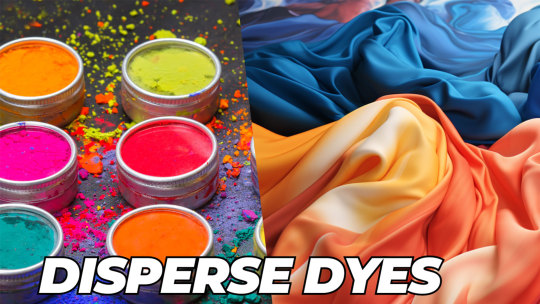
#Disperse Dyes manufacturer#Disperse Dyes supplier#Disperse Dyes supplier in vadodara#Best Disperse Dyes#top Disperse Dye#Disperse Dyes manufacturer in India#Vietnam#Brazil
0 notes
Text
Fabric dyeing services
Applying dyes or pigments to textile materials, such as fibers, yarns, and fabrics, is the process of dying, which aims to produce color with the appropriate color fastness. Typically, dyeing is carried out in a unique solution made up of certain chemicals and colors. Get the best fabric dyeing services with PI Cottex. Visit us today!

0 notes
Text
Sustainable Cotton Fabrics in India: Sri Shakthi Tex, Your Eco-Friendly Partner
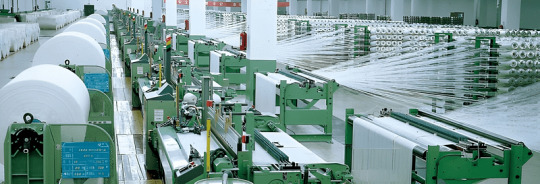
Looking for top-quality, sustainable cotton fabrics in India? Look no further than Sri Shakthi Tex, a leading cotton fabric manufacturer dedicated to ethical and environmentally responsible practices. Founded in 1994, we offer a wide range of high-quality cotton fabrics wholesale, perfect for businesses seeking eco-friendly solutions.
Why Choose Sri Shakthi Tex?
Sustainable Practices: We source our cotton from responsible farms and use eco-friendly dyes and chemicals, minimizing our environmental impact.
Diverse Selection: From plain fabric and shirting fabric to duck canvas and stain fabrics, we have the perfect material for your project.
Superior Quality: We are committed to providing the best possible fabrics at competitive rates, never compromising on quality.
Eco-Friendly Products: Beyond fabrics, we offer cotton bag fabric for sustainable packaging and white dhoti made with ethical practices.
Reliable Supplier: With over 28 years of experience, we are a trusted partner for businesses across India.
More Than Just Fabric:
At Sri Shakthi Tex, we believe in responsible textile production. We are committed to:
Ethical Labor Practices: We ensure fair wages and safe working conditions for all our employees.
Community Development: We actively support our local community through various initiatives.
Reducing Waste: We minimize waste throughout our production process and promote sustainable practices.
Join the Sustainable Movement:
By choosing Sri Shakthi Tex, you are not just buying high-quality cotton fabrics, you are supporting a company that is committed to a sustainable future. Contact us today to learn more about our products and services and how we can help you achieve your sustainability goals.
#handloommagic#srishakthitex#sri shakthi tex#sustainable cotton fabrics india#cotton fabric manufacturer india#high-quality cotton fabrics wholesale#eco-friendly textile supplier india#white dhoti manufacturer#organic cotton india#ethical textile production#sustainable fashion india#eco-friendly clothing#responsible sourcing#fair trade cotton#GOTS certified fabric#natural dyes#ethical labor practices
0 notes
Text
At Sam Vegetable Colours, we proudly stand as a premier plant based dyes manufacturing company in India, weaving a narrative of excellence and environmental consciousness through our commitment to plant-based dyes for fabrics. Join us on a journey where artistry, tradition, and eco-consciousness converge to create a world of colors that not only captivate the senses but also contribute to a sustainable future.
Embracing Nature’s Palette
In the heart of India, where the diverse landscapes paint a canvas of unparalleled beauty, Sam Vegetable Colours emerges as a beacon of creativity and sustainability. As specialists in the craft of plant-based dye manufacturing in India, we delve into the rich tapestry of nature to curate a spectrum of colors that transcend the ordinary. As one of the leading plant based dyes manufacturers in India, our expertise lies in the intricate process of creating Plant-based Dyes for fabrics, an art form that has been perfected over time with precision and passion.
0 notes
Text
0 notes
Text
Natural dyes manufacturers in India .Sam Vegetable Colours is a pre-eminent natural dyes manufacturing company in India. An ISO-certified company, we deal in the manufacturing of a diverse range of Natural dyes from India. Along with manufacturing finest-quality Natural dyes from India, we also provide job work services by using the advanced Jigger dyeing machine for natural dyeing (using Natural dyes from India) on all kinds of fabrics at competitive prices. With us, you can get Natural dyes at best price in India. You can also request for Natural dyes for fabrics bulk price.
0 notes
Text
How Textile Chemical Dyes Impact the Environment?
In the vibrant world of fashion and textiles, colors play a pivotal role in capturing our imagination and defining our sense of style. The captivating hues of our garments owe their brilliance to a significant yet often overlooked aspect of the industry: chemical dyes.
These dyes have revolutionized the textile sector, making it possible to produce a wide array of colors and patterns that appeal to consumers' ever-changing tastes. However, amidst this rainbow of possibilities lies a dark truth - the environmental impact of textile chemical dyes.
In this blog, we delve into the consequences of using chemical dyes in textile production and explore sustainable alternatives that can help mitigate the ecological footprint of the fashion industry.

Water Pollution
One of the most significant environmental concerns associated with chemical reactive dyes in textiles is water pollution. Conventional dyeing processes often involve large amounts of water, which is used to rinse and treat fabrics. As a result, vast quantities of chemically-laden wastewater are discharged into rivers and water bodies, contaminating aquatic ecosystems. Many of these dyes are non-biodegradable and can persist in the environment for decades, disrupting the natural balance and threatening the health of aquatic organisms.
Energy Consumption
The process of digital textile sublimation inks requires substantial energy inputs, primarily during the dye application and fixation stages. Traditional dyeing methods may involve high-temperature dye baths and extended processing times, adding to the industry's carbon footprint. The energy-intensive nature of these processes contributes to greenhouse gas emissions, accelerating climate change and its devastating consequences.
Toxic Chemical Exposure
Chemical dyes used in textile auxiliaries manufacturers often contain hazardous substances such as heavy metals, formaldehyde, and volatile organic compounds (VOCs). Not only are these substances harmful to the environment, but they also pose significant health risks to the workers in the textile industry who are exposed to them daily. Moreover, consumers may experience allergic reactions and skin irritations when in contact with garments containing residual dye chemicals.
Biodiversity and Land Contamination
When dye wastewater finds its way into the soil, it can have severe consequences for terrestrial ecosystems. The toxic substances from the dyes can leach into the soil, affecting soil quality and disrupting the delicate balance of local flora and fauna. Moreover, the disposal of waste from dyeing processes can lead to the accumulation of harmful chemicals in landfills, further exacerbating the environmental impact.
Scarce Resource Consumption
Many chemical dyes rely on non-renewable resources for their production. For instance, some synthetic dyes use petroleum-based derivatives, placing additional strain on dwindling fossil fuel reserves. As these resources become scarcer, the textile industry must find more sustainable alternatives to safeguard the planet's future.
Embracing Sustainable Solutions
As we confront the ecological consequences of chemical dyes, the textile industry is gradually recognizing the urgent need for change. Embracing sustainable solutions can help mitigate the impact of dyes on the environment:
Natural Dyes: Traditional plant-based dyes, such as indigo, turmeric, and madder, offer a biodegradable and eco-friendly alternative. They can be sourced sustainably, reducing the strain on the environment.
Waterless Dyeing Technologies: Innovative technologies, like air dyeing and digital printing, minimize water usage and eliminate the discharge of wastewater, significantly reducing water pollution.
Biodegradable Dyes: Researchers are developing biodegradable dyes that break down naturally over time, circumventing the issue of persistent chemicals in the environment.
Eco-Friendly Dyeing Processes: Manufacturers can adopt low-impact dyeing techniques that consume less energy and minimize toxic chemical usage, ensuring a cleaner and safer environment for all.
The use of chemical dyes offers by textile printing ink exporter in the textile industry has undoubtedly made fashion more colourful and accessible. However, this innovation comes at a high cost to our environment. From water pollution to biodiversity loss, the impact of chemical dyes on the planet is far-reaching.
To ensure a sustainable future, it is imperative for the industry to embrace eco-friendly alternatives and implement responsible dyeing practices. By taking steps towards a more environmentally conscious approach, we can paint a brighter, greener canvas for the fashion world, where creativity and conscience coexist harmoniously.
#Textile Dyes Exporter#Textile Dyes Manufacturers#Textile Dyes Manufacturers in India#Digital Textile Reactive Inks#Digital Textile Printing Ink Manufacturer#Digital Textile Printing Ink Exporters#Textile Printing Ink Exporter#Digital Textile Sublimation Inks#Textile Auxiliaries Manufacturers#Textile Auxiliaries Exporter#Reactive Dyes Manufacturer#Reactive Dyes Exporter#Reactive Dyes Manufacturer in India#Textile Chemical Dyes
0 notes
Text
The Importance of Dye Fixing Agents in the Textile Industry

The textile industry is a colorful world where the vibrancy and durability of fabrics play a crucial role in the marketability of products. In this context, dye fixing agents emerge as indispensable allies in the quest for long-lasting and vibrant textiles. These specialized chemicals not only ensure that colors adhere firmly to the fibers but also play a significant role in enhancing the overall quality and appeal of textile products.
What are Dye Fixing Agents
During the dyeing process lies the challenge of colour fastness—ensuring that dyes remain vivid and steadfast through washes and exposure to environmental elements. Dye fixing agents tackle this challenge head-on by forming strong chemical bonds between dye molecules and textile fibers. This bond significantly reduces the likelihood of fading, bleeding, or colour loss, thereby preserving the fabric’s aesthetic appeal over time.
Types of Dye Fixing Agents
Dye Fixing Agent Manufacturers use a variety of dye fixing agents, each suited to specific types of fibers and dyes, to achieve the desired level of colour fastness. Find the below mentioned types:
Tannic Acid-Based Fixing Agents: Derived from tannin-rich plants, these agents are effective for improving the colour fastness of natural dyes on cellulosic fibers, such as cotton and linen. They work by forming complexes with metal ions, facilitating a stronger bond between the dye and the fiber.
Metal Chelating Agents: These agents form stable complexes with metal ions present in the dye or water, preventing these ions from interfering with the dye-fiber bonding process. This enhances the dye fixation and overall colour retention.
Cationic Dye Fixing Agents: Primarily used for synthetic fibers like polyester and nylon, cationic agents work by forming electrostatic attractions with negatively charged dye molecules, thereby increasing the affinity between the dye and the fiber and enhancing colour fastness.
Crosslinking Fixing Agents: By creating strong covalent bonds between the dye molecules and textile fibers, crosslinking agents ensure excellent wash-fastness and resistance to fading. These agents are preferred for their durability, especially in harsh environmental conditions.
Anionic Dye Fixing Agents: Best suited for dyeing wool and silk, which carry a net positive charge, anionic agents form ionic bonds with positively charged dye molecules, ensuring effective dye fixation and vibrant colour retention.
Reactive and Non-reactive Fixing Agents: Reactive agents introduce reactive groups into the fixing agent molecules, forming covalent bonds with dye molecules and the fiber, improving dye fastness. Non-reactive agents, on the other hand, may work by film-forming on the fabric or blocking water-soluble groups on the fiber surface to improve colour fastness.
Each type plays a crucial role in ensuring that textiles retain their colour vibrancy and resist fading over time, underscoring the vital role dye fixing agents play in the textile industry.
The Role and Benefits of Dye Fixing Agents
1. Enhancing Colour Fastness
One of the paramount achievements of dye fixing agents is their role in bolstering colour fastness. This characteristic is crucial, as it determines how well a fabric can retain its colour through various conditions, such as exposure to sunlight, repeated washing, or mechanical wear.
By establishing a chemical fortress around the dye molecules, these agents effectively secure the dye to the fiber, minimizing the risk of fading. This process is not just about preserving the visual appeal of textiles but also about ensuring their longevity and durability. For manufacturers and consumers alike, this translates to textiles that maintain their vibrant hues and aesthetic appeal over time, even after multiple laundering cycles.
2. Preventing Dye Bleeding
Dye bleeding is a common challenge in the textile industry, especially when dealing with fabrics that feature multiple colors or intricate patterns. Dye fixing agents address this issue head-on by locking the dye molecules within the fabric’s fibers. This preventive measure ensures that colors do not migrate beyond their intended boundaries, preserving the sharpness and clarity of designs.
The significance of this function cannot be overstated, as it not only enhances the product’s overall quality but also boosts consumer satisfaction. Textiles treated with efficient dye fixing agents are more likely to hold their ground against the common pitfalls of colour blending or bleeding, ensuring that every wash leaves the design as intended.
3. Ensuring Uniform Colour Distribution
Achieving a uniform distribution of colour across a textile surface poses a significant challenge, particularly in large-scale production settings. Here, dye fixing agents play a pivotal role by facilitating an even attachment of dye molecules to the fabric fibers. This uniformity is critical for several reasons.
First, it ensures that every inch of the fabric reflects the intended shade and intensity, eliminating patches or variations that can detract from the textile’s overall appearance. Secondly, uniform colour distribution contributes to the consistency of product quality, a factor that is particularly important for brands that pride themselves on delivering exceptional and reliable merchandise.
In essence, dye fixing agents serve as the guardians of colour integrity, ensuring that from the first dye bath to the final product, the fabric remains a true representation of the designer’s vision.
4. Environmentally Friendly Solutions
The shift towards sustainability has ushered in an era where the environmental impact of textile production is under scrutiny. In this context, the role of dye fixing agents extends beyond just improving fabric quality to encompass environmentally friendly practices. Effective dye fixation minimizes the need for repeated washing and re-dyeing processes, which in turn reduces water consumption and the discharge of dye pollutants into water systems.
Furthermore, advancements in dye fixing agent formulations are increasingly focusing on biodegradable and eco-friendly components. These innovations aim to maintain or even enhance the efficacy of dye fixation while ensuring that the agents themselves do not contribute to environmental degradation.
The use of such agents aligns with the broader industry goal of reducing the ecological footprint of textile production, paving the way for a more sustainable fashion and fabric manufacturing sector.
Conclusion: ColourInn’s Commitment to Quality and Sustainability
In conclusion, the role of dye fixing agents in the textile industry cannot be overstated. Their contribution to enhancing colour fastness, preventing dye bleed, and ensuring uniform colour distribution is invaluable. As one of the leading dye fixing agent suppliers and manufacturers, ColourInn stands at the forefront of this essential aspect of textile production.
Our commitment to quality and sustainability is reflected in our innovative product range and eco-friendly practices, ensuring that our clients receive only the best in textile auxiliaries and chemicals. At ColourInn, we understand that the beauty of textiles lies not just in their colors but in their ability to endure and inspire.
#Dyeing Printing Auxiliaries Manufacturer#Dyeing Printing Auxiliaries Manufacturer in India#Textile Finishing Chemicals Manufacturers#Textile Finishing Chemicals Manufacturers in India#Textile Finishing Chemicals Suppliers#Dyes Manufacturers#Textile Dyes Manufacturers#dyes manufacturers in india#textile finishing chemicals#textile dyes manufacturers#dyeing auxiliaries#Finishing Chemical Manufacturers#Printing Dyes Suppliers#Textile Auxiliaries#Textile Auxiliary Manufacturer#Pretreatment Textile Manufacturer#Textile Pretreatment Chemicals#textile dyes auxiliaries#textile chemicals manufacturer
0 notes
Photo

Dyes were playing an essential role in clothing these days in 2020; there was a trend going on, which was tie-dye T-shirts and clothes. Due to that trend, it increased the market value of dyes.
0 notes
Text
Learn About 2 Types of Circular Knitting Machine and Their Advantages
Comprehensive Guide of Single Jersey Circular Knitting Machine and Its Advantages

Single jersey knitting machine has one cylinder of around 30 inches. This machine can knit fabric with less GSM [gsm in fabric how to calculate] compared to a double jersey knitting machine. Knitting is done in one direction in this machine. The knitting in this machine takes place by the coordination of needle and sinker, where needle makes the loop and sinker push it toward the fabric. Sinker plays an important part in this machine. Using this fabric we can manufacture plain fabric which is used in the production of t-shirts, blouses, tops and casual dress. Since the invention of knitting plain fabric is being made. Plain fabric can be made using hand and machine both. Wool production is limited to 20 gauge using this fabric. The fabric made out of this machine has curling ends.
Advantages of Single Jersey Circular Knitting Machine
A- This machine is a good choice for mass production
B- This machine can manufacture a variety of products from lightweight to heavy-weight fabric.
C- Single jersey machine is easy to maintain and repair
D- Less expensive compared to double jersey knitting machine ]
E- It can switch between colors easily
Introducing Double Jersey Circular Knitting Machine and Its Advantages
A double jersey circular knitting machine is nothing but a single jersey knitting machine; the only difference in this type of knitting machine is that it has an extra set of needles which moves horizontally. In this machine there are 2 sets of needles adjacent to each other. This machine knit in 2 directions perpendicular to each other. Sinker is not required in this machine. The final product that is made out of this machine are sweaters, sweatshirt, hoodies, etc. The final product of this machine does not curl unlike a single jersey circular knitting machine.
Advantages of Double Jersey Circular Knitting Machine
A- Can produce fabric with different textures such as terry and pique
B- It can produce multiple patterns, such as stripes and jacquards
C- It can produce thicker fabric with higher insulated properties
Fabric is an important part of t-shirts or any garment manufacturing. We as a t-shirt manufacturer see that when a wholesaler buy t-shirts in bulk from us they check the quality of the fabric.
#textile#manufacturing#textiles#yarn#clothing#dyeing#knitting#business#fiber art#pattern#fabric#fiber#cotton#linen#wool#tshirt#weaving#small business#entrepreneur#india#made in india#trade#wholesale t shirts#wholesalers
5 notes
·
View notes
Text
RK Industries | Micro Disperse Vat Dye for Various Applications
RK Industries provides Micro Disperse Vat Dyes, known for their color vibrancy, durability & versatility ensuring consistent quality across various industries
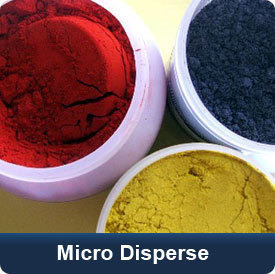
#Micro Disperse of Vat Dyes and Colloisols Dyes manufacturer#Micro Disperse of Vat Dyes and Colloisols Dyes#Micro Disperse of Vat Dyes manufacturer#Colloisols Dyes manufacturer#Micro Disperse of Vat Dyes and Colloisols Dyes manufacturer in India#Vietnam#Brazil
0 notes
Text
Top 5 Benefits Of Using Henna
Henna, also known as Mehendi, is a natural plant-based dye that has been used for centuries in many cultures around the world. It is a popular form of temporary body art and is commonly used for dying hair, nails, and skin. Henna has a long list of benefits, and in this article, we will discuss the top 5 benefits of using henna.
Natural Hair Dye One of the most popular uses of henna is for hair dyeing. Unlike chemical hair dyes that can damage your hair and scalp, henna is a natural hair dye that nourishes your hair and promotes healthy growth. Henna coats your hair shaft and adds a natural shine, making your hair look lustrous and healthy. Moreover, it does not fade quickly and is known to last for several weeks.
Promotes Hair Growth Henna has natural properties that help to nourish and strengthen hair, promoting healthy hair growth. It contains essential nutrients such as vitamin E, amino acids, and proteins that help to stimulate hair growth, reduce hair fall, and prevent dandruff. Henna also helps to prevent split ends, keeping your hair healthy and strong.
Natural Body Art Henna is widely used as a natural body art form. It is applied to the skin in intricate designs and patterns, leaving a temporary tattoo that lasts for a few weeks. Henna is a safe and natural alternative to chemical-based tattoos, and it is non-toxic and hypoallergenic. It is also a popular form of body art during weddings and other celebrations in many cultures around the world.
Cooling Effect on Skin Henna has a natural cooling effect on the skin, making it a popular remedy for hot and humid climates. It helps to soothe the skin, reduce inflammation, and prevent sunburn. Henna is also known to have antibacterial and antifungal properties, making it an excellent remedy for skin infections and allergies.
Natural Hair Conditioner Henna is an excellent natural hair conditioner that helps to nourish and moisturize your hair, leaving it soft and silky. It penetrates the hair shaft, repairing damaged hair and preventing breakage. Henna is also known to help balance the pH of your scalp, reducing oiliness and preventing dandruff.
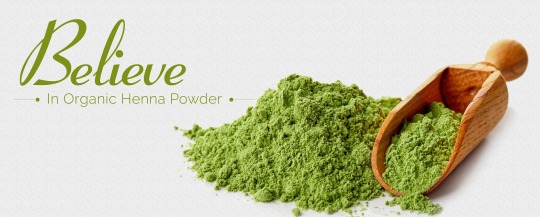
NMP Udhyog is one of the leading organic henna powder manufacturers in India. They specialize in producing high-quality henna powder that is free from any harmful chemicals or additives. They use only natural and organic henna leaves to produce their henna powder, ensuring that their product is safe and healthy for their customers.
NMP Udhyog's henna powder is rich in natural color and provides excellent coverage for grey hair. It is also a popular choice for natural body art and is known for its deep red color and long-lasting effect. Moreover, their henna powder is rich in essential nutrients that help to nourish and strengthen your hair, promoting healthy hair growth.
In conclusion, using henna has a long list of benefits that make it an excellent choice for natural hair dye, body art, and skin care. NMP Udhyog is a trusted supplier of high-quality organic henna powder in India, and their pro
ducts are safe and healthy for their customers. So if you're looking for a natural and safe alternative to chemical-based products, give henna a try and experience the many benefits it has to offer.
0 notes
